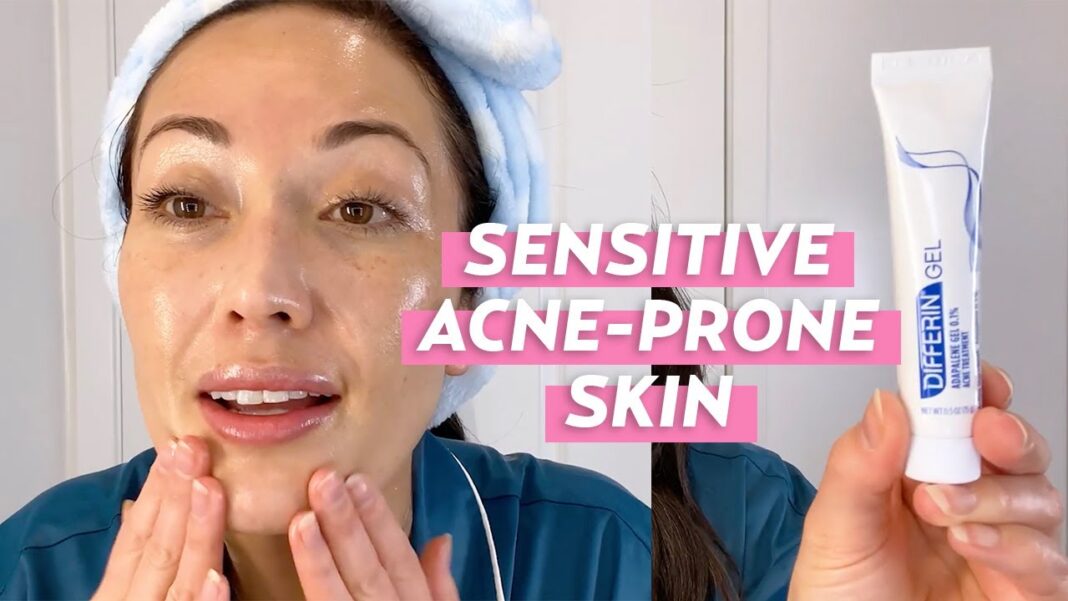Acne-prone skin requires a targeted and consistent skincare routine, especially at night when the skin undergoes its natural repair process. A well-structured nighttime skincare routine for acne-prone skin helps to unclog pores, reduce inflammation, and prevent future breakouts. While many people focus on their morning rituals, what you do before bed is just as crucial—if not more.
In this guide, we’ll break down an effective nighttime skincare routine for acne-prone skin, offer tips on product selection, and explain why each step is essential.
Why a Nighttime Routine Matters for Acne-Prone Skin
During the night, your skin is not exposed to environmental stressors like pollution, UV rays, or makeup. This is the best time for your skin to heal, absorb active ingredients, and regenerate. Ignoring your nighttime skincare can lead to clogged pores, excess oil production, and worsening acne over time.
Step-by-Step Nighttime Skincare Routine
Here’s a comprehensive step-by-step routine tailored for acne-prone skin:
1. Double Cleansing
Start with an oil-based cleanser to break down sunscreen, makeup, and excess sebum. Follow it with a gentle, water-based cleanser to remove impurities from deep within the pores.
- Why it matters: Clogged pores are one of the main causes of acne. Double cleansing ensures your skin is thoroughly clean without stripping natural oils.
2. Toner or Exfoliating Solution
Use an alcohol-free toner to balance the skin’s pH or an exfoliating toner with ingredients like salicylic acid (BHA) or glycolic acid (AHA).
- Why it matters: Chemical exfoliants help dissolve dead skin cells and reduce congestion, keeping acne under control.
3. Treatment Serum
Apply a targeted serum with ingredients like niacinamide, retinol (low concentration), or azelaic acid. These ingredients help reduce inflammation, regulate oil production, and improve skin texture.
- Why it matters: Serums deliver concentrated active ingredients deep into the skin for maximum impact.
4. Moisturizer
Choose a lightweight, non-comedogenic moisturizer. Look for hydrating ingredients like hyaluronic acid, ceramides, or glycerin.
- Why it matters: Hydration is essential, even for oily or acne-prone skin. A balanced moisture barrier helps prevent overproduction of oil.
5. Spot Treatment (If Needed)
Apply benzoyl peroxide or salicylic acid to active breakouts.
- Why it matters: These ingredients help dry out pimples and kill acne-causing bacteria.
6. Optional: Facial Oil or Sleeping Mask
Only if your skin is on the drier side or you’re using drying acne treatments, a few drops of a lightweight oil (like squalane) or a non-comedogenic overnight mask can help lock in moisture.
Suggested Products by Step
| Step | Product Type | Recommended Ingredients | Purpose |
|---|---|---|---|
| 1 | Oil Cleanser + Gel Cleanser | Jojoba oil, Green tea, Salicylic acid | Remove oil, dirt, and impurities |
| 2 | Toner/Exfoliant | BHA, AHA, Witch hazel (alcohol-free) | Balance pH and exfoliate dead cells |
| 3 | Serum | Niacinamide, Retinol, Azelaic Acid | Target acne and inflammation |
| 4 | Moisturizer | Hyaluronic acid, Ceramides | Maintain hydration |
| 5 | Spot Treatment | Benzoyl Peroxide, Sulfur | Treat active breakouts |
| 6 | Sleeping Mask (optional) | Squalane, Centella Asiatica | Lock in moisture overnight |
Common Mistakes to Avoid
- Over-exfoliating: Using acids daily can damage the skin barrier and worsen acne.
- Skipping moisturizer: Even oily skin needs hydration. Dry skin may produce more oil to compensate.
- Using too many actives: Retinol, acids, and benzoyl peroxide should be used with care to avoid irritation.
- Not being consistent: Results take time. Frequent changes in products can confuse your skin and prolong breakouts.
How to Customize Your Routine
Every skin is different, and acne can range from mild to severe. Here are some tips to tailor your routine:
- For sensitive skin: Stick with soothing ingredients like niacinamide, aloe vera, and avoid alcohol-based products.
- For oily skin: Opt for gel-based products and include BHAs to help manage oil.
- For dry acne-prone skin: Incorporate gentle moisturizers and possibly reduce exfoliation frequency.
Also, your Morning Skincare Routine for Oily Skin should complement your nighttime steps. Use lightweight, oil-controlling products in the morning and avoid layering too many actives during the day to reduce sensitivity to the sun.
FAQs: Nighttime Skincare Routine for Acne-Prone Skin
Q1: Can I use retinol if I have acne?
Yes, retinol is a powerful ingredient that helps regulate cell turnover and prevent clogged pores. Start with a low concentration and use it 2–3 times a week.
Q2: How often should I exfoliate?
Exfoliate 2–3 times per week. Over-exfoliating can damage the skin barrier and lead to more breakouts.
Q3: Should I moisturize even if my skin is oily?
Absolutely. Skipping moisturizer can cause your skin to produce even more oil. Use a lightweight, non-comedogenic formula.
Q4: Is it okay to pop pimples at night?
No. Popping pimples can introduce bacteria, cause scarring, and prolong healing. Use spot treatments instead.
Q5: How long does it take to see results?
You may begin to see improvement within 2–4 weeks, but full results from active ingredients like retinol or acids may take up to 12 weeks.
Final Thoughts
An effective nighttime skincare routine for acne-prone skin is all about consistency, the right ingredients, and avoiding harsh practices. Focus on gentle cleansing, targeted treatments, and adequate hydration. Give your skin time to respond to your routine before making changes.
Paired with a good Morning Skincare Routine for Oily Skin, you’ll be able to manage acne more effectively and maintain a clearer, healthier complexion over time.


